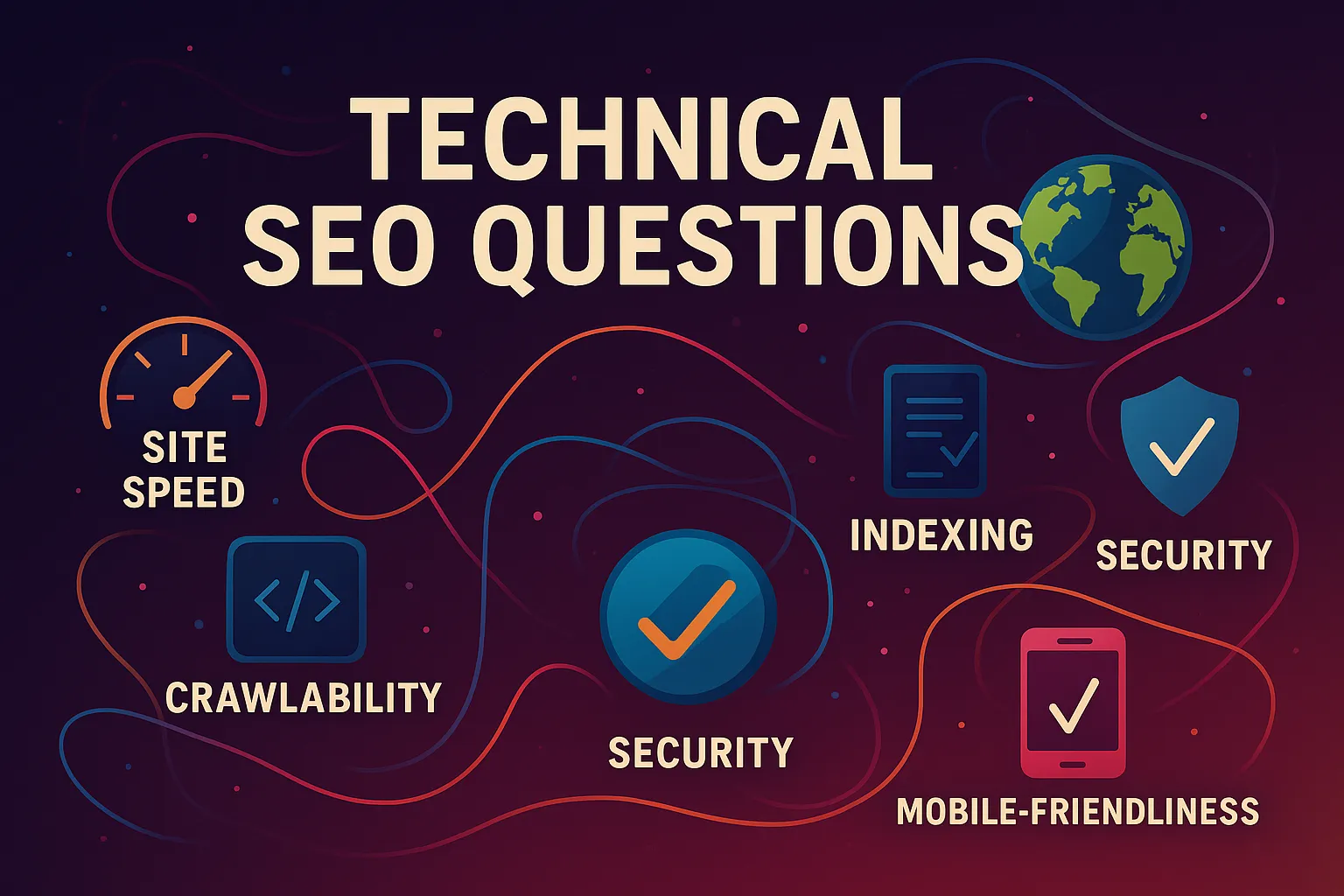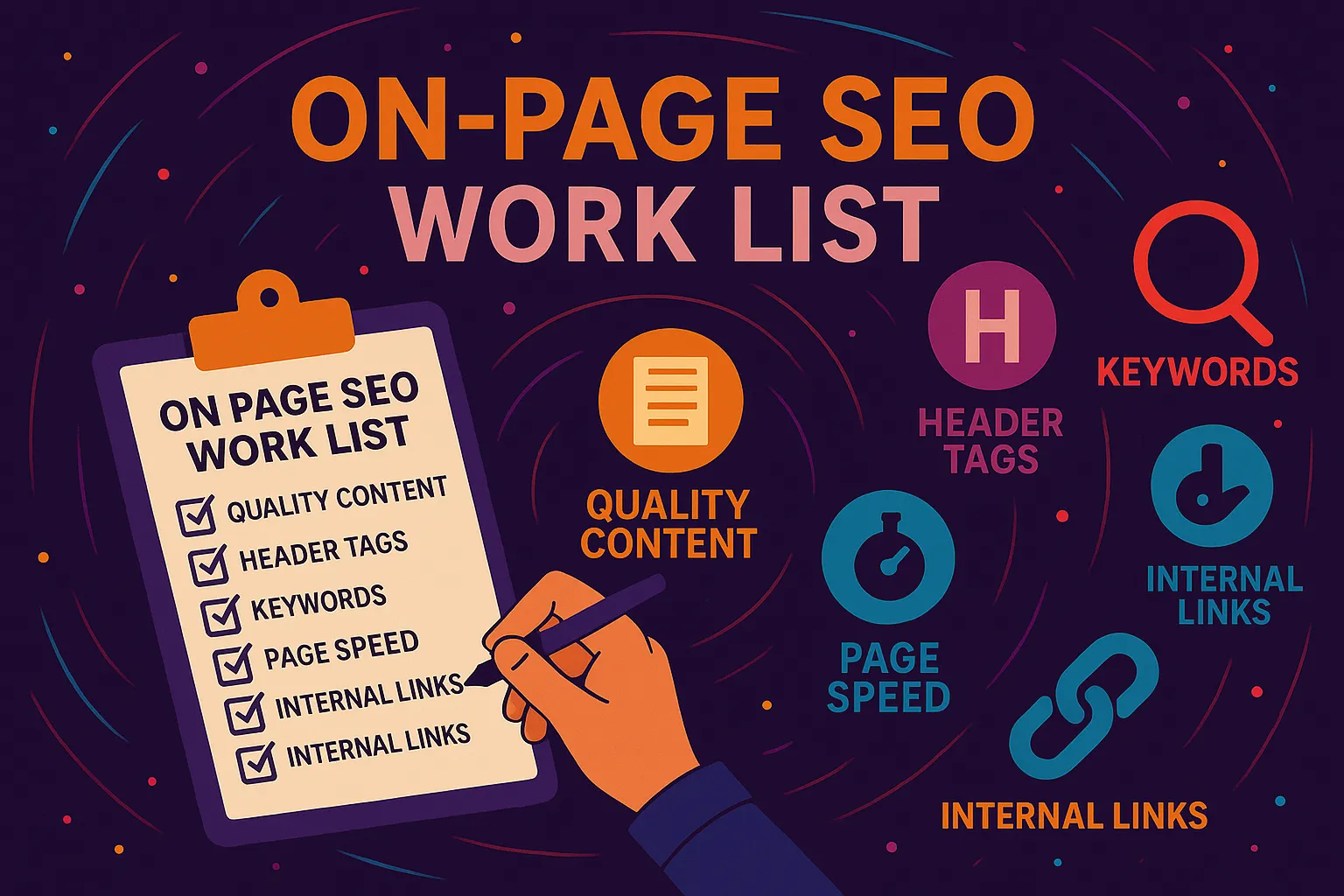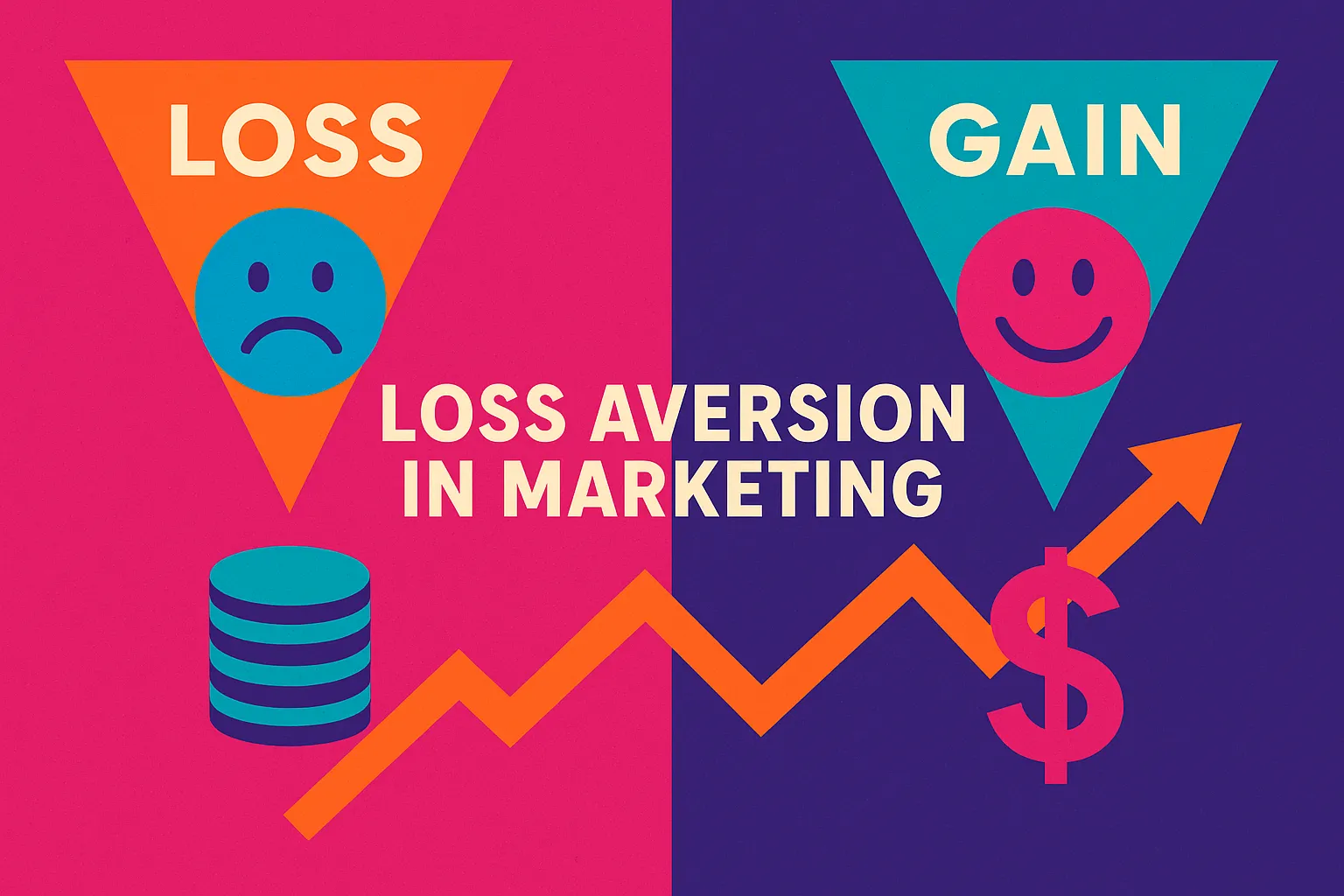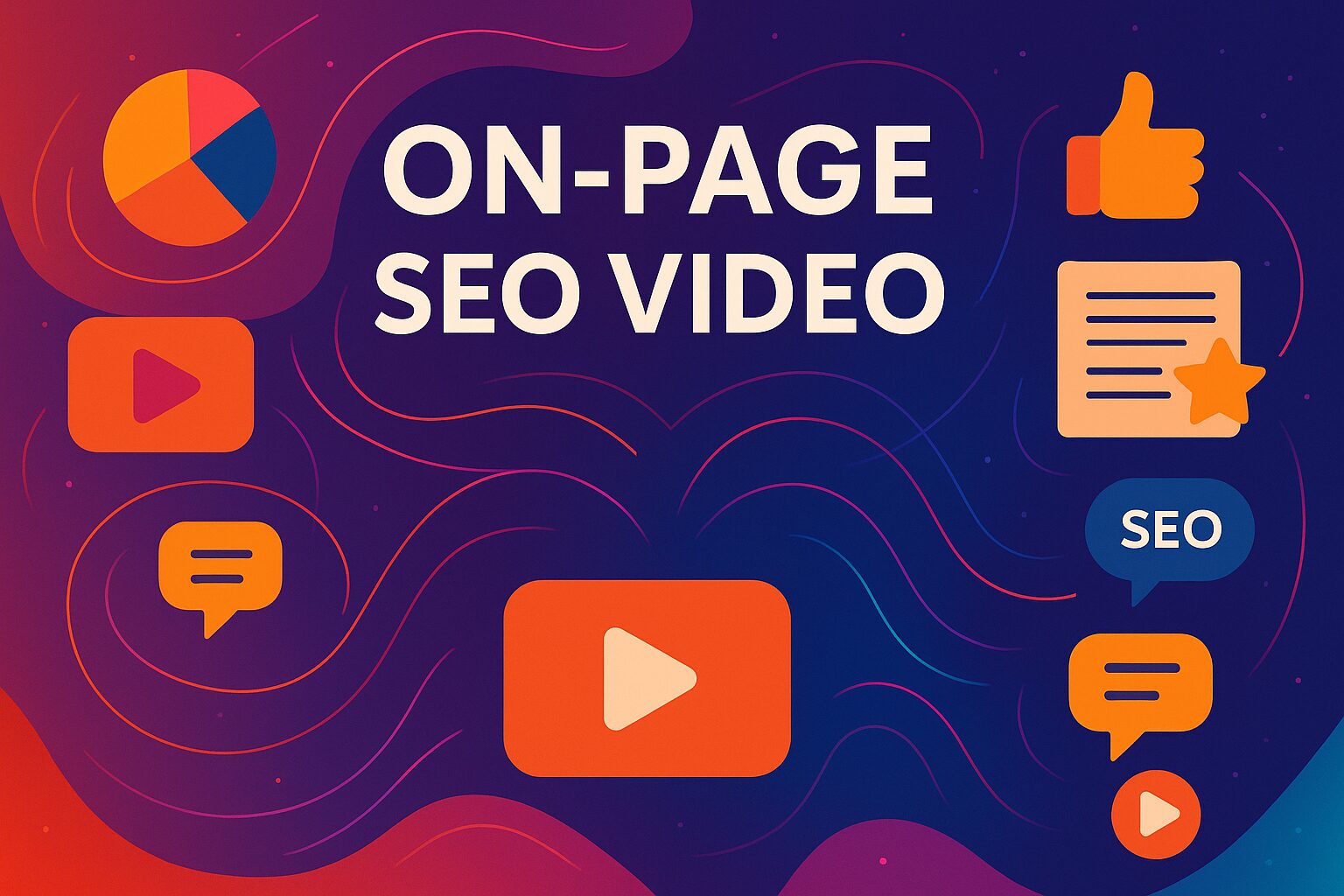What is “technical SEO”?
Technical SEO is the part of SEO that focuses on how search engines crawl, index, and render your website. It has nothing to do with writing content or building backlinks.
Instead, it’s all about making your site easy for Google to access, understand, and serve to users. Think of it like building a solid foundation before you decorate the house.
If the foundation isn’t stable, no amount of flashy decor is going to matter. When I started Vibe Branding over a decade ago, I quickly learned that many clients had great content but were still losing traffic.
Why? Because of technical SEO issues.
Pages weren’t indexed. Sites were slow.
Structures were messy. Fixing those core problems led to huge traffic wins.
That’s why I always say: If you’re not asking the right technical SEO questions, you’re leaving rankings on the table.
TL;DR (Too Long; Didn’t Read)
- This post breaks down the most important technical SEO questions you need to know in 2025 and beyond.
- You’ll learn the difference between technical SEO and other SEO types like on-page and off-page.
- I’ll show you how to find and fix issues like crawl errors, duplicate content, and slow page speeds.
- We’ll go over the best tools I use every day, like Google Search Console and Screaming Frog.
- You’ll get tips for improving Core Web Vitals, using structured data, managing redirects, and auditing your site properly.
- This post comes from 10+ years of experience running a digital marketing agency that lives and breathes SEO.
What Makes Technical SEO Different?
Let me break it down clearly. On-page SEO focuses on optimizing your content—like keywords, headlines, and meta descriptions.
Off-page SEO involves getting backlinks from other sites to boost your authority. But technical SEO is the behind-the-scenes setup: robots.txt, XML sitemaps, canonical tags, site speed, mobile performance, crawl budgets, and indexation.
It’s the part most marketers ignore because it’s “not sexy.” But here’s the thing: without a solid technical setup, your content might never get seen.
Googlebot needs to be able to read your site without friction. If pages are blocked, duplicated, or load slowly, you’re in trouble.
So yes, technical SEO questions should be asked often and updated as Google changes the game.
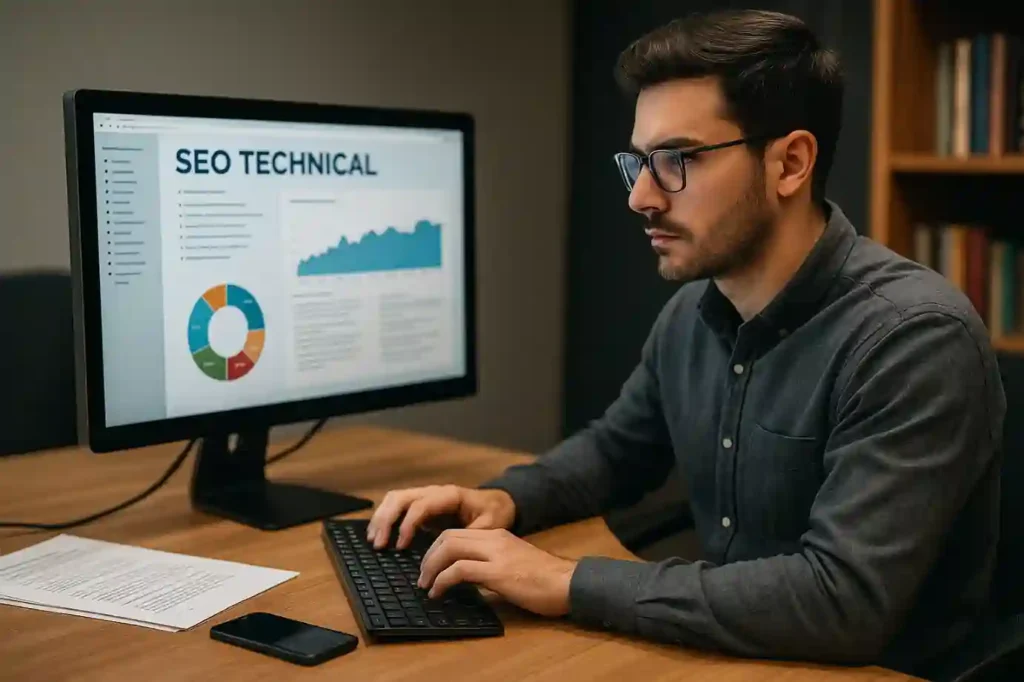
Why Technical SEO Impacts Your Google Ranking
Over the years, I’ve run audits for everything from mom-and-pop eCommerce shops to massive SaaS platforms. And I’ve seen it all.
Sites that weren’t mobile-friendly. Sites with thousands of crawl errors.
Sites where only 30% of content was actually indexed. These technical flaws directly impacted rankings and revenue.
If Google can’t crawl or index your site correctly, it won’t rank—no matter how amazing your content is. And let’s not forget that Core Web Vitals are now confirmed ranking factors.
That means things like page speed, interactivity, and layout shift actually influence your SEO. A site that performs well technically provides a better user experience.
That’s what Google wants. That’s what we deliver.
Most Common Technical SEO Questions (And What They Mean)
Here are the questions I hear the most, either during audits or from clients:
- Why isn’t Google indexing all my pages?
- Why is my site still slow after I installed a caching plugin?
- Why do I see crawl errors in Search Console?
- How can I fix duplicate content issues?
- Why are my redirects causing SEO problems?
Each of these questions points to a deeper technical problem. And each one requires a different set of tools and actions to resolve.
When I audit a site, these are the exact things I look at first. Getting these right gives your SEO strategy a real shot at working.
Tools I Trust for Technical SEO Fixes
You need tools that show you what’s happening behind the curtain. These are my go-tos:
Tool | Purpose |
Google Search Console | Indexing, crawling, errors, Core Web Vitals |
Screaming Frog | Full site crawls, duplicate content, redirect chains |
Google PageSpeed Insights | Site speed (mobile and desktop) |
Ahrefs/Semrush | Backlink profile, technical SEO reports |
Schema Markup Validator | Structured data testing |
I run these tools in a regular audit workflow. For example, when I use Screaming Frog, I’ll start with a crawl overview, then dig into things like canonical mismatches, 404s, and slow-loading pages.
Search Console is where I go to verify if fixes were successful.

Critical Technical SEO Elements to Check Regularly
At Vibe Branding, we use a 40-point technical checklist that we run quarterly. It covers the basics and the advanced stuff.
Here are five that matter the most:
- Crawlability: Are your pages accessible to Google? Check robots.txt and crawl budget.
- Indexing: Are the right pages getting indexed? Watch for noindex tags and canonical errors.
- Speed: Are your pages loading in under 3 seconds?
- Mobile-friendliness: Is your design responsive and usable on phones?
- HTTPS: Is your site secure? No one likes outdated HTTP.
Ignoring these means inviting SEO failure. It’s why we use automated tools combined with manual reviews to get a full picture.
No tool alone catches everything.
Why Website Architecture Impacts SEO Performance
Think of your website like a city. Website architecture is the road map.
You want important pages to be easily accessible from the homepage. That usually means building a clean hierarchy: homepage → category pages → sub-category or product pages.
Bad architecture leads to orphan pages, poor internal linking, and deep URLs that take too many clicks to reach. That affects crawl depth and dilutes authority.
I’ve fixed sites where the most important pages were buried five clicks deep, with no internal links. We redesigned the nav, created hub pages, and used breadcrumbs to improve hierarchy.
Rankings followed. This is one of the most overlooked technical SEO questions clients bring up.
But structure determines how much of your content actually gets seen—by users and bots.
Core Web Vitals: Real SEO Ranking Factors
Google made it official: Core Web Vitals matter. These are the metrics tied to user experience: Largest Contentful Paint (LCP), First Input Delay (FID), and Cumulative Layout Shift (CLS).
Each one affects how users interact with your site. A slow LCP means your biggest content takes too long to load.
A bad FID means your site feels laggy when clicked. High CLS means your layout shifts too much while loading.
All of these frustrate users—and signal to Google that your site isn’t delivering a great experience. We use Lighthouse and CrUX data from Google to measure real-world performance.
A simple font optimization once dropped a client’s CLS by 0.3 points. That directly improved their rankings for competitive terms.
If your site feels clunky, you’ll lose rankings and conversions.

HTTPS: More Than Just a Security Padlock
Using HTTPS is no longer optional. Not just for SEO, but for user trust.
If users see “Not Secure” in their browser bar, they bounce. If Google sees it, you’re penalized.
Migrating from HTTP to HTTPS isn’t complicated—but it must be done carefully. You need to:
- Buy and install an SSL certificate
- Set up 301 redirects from all HTTP pages
- Update internal links to use HTTPS
- Resubmit your sitemap in Search Console
One client forgot to redirect old HTTP versions, resulting in duplicate content and split authority. We caught it during an audit and fixed it in under a week.
Rankings recovered within a month. That’s why HTTPS is one of the first technical SEO questions I bring up during audits.
Identifying and Diagnosing Technical SEO Issues
When I first started Vibe Branding, one of the biggest struggles I saw among business owners was figuring out what was actually wrong with their websites.
They knew traffic was low or stagnant, but not why. That’s where tools like Google Search Console and Screaming Frog come in.
These are two of my go-to platforms whenever I run a technical SEO audit. With Search Console, I can quickly detect indexing errors, mobile usability issues, and even security problems like hacked content or manual actions.
Screaming Frog, on the other hand, lets me crawl an entire site and instantly see if there are broken links, redirect loops, missing title tags, or poorly structured headers. Over the years, we’ve run over 300 audits across a wide range of industries—from ecommerce stores to SaaS startups—and it’s amazing how many of the same issues crop up.
One client had over 4,000 broken internal links that were quietly tanking their SEO performance. Another had set a noindex tag site-wide after a redesign and didn’t realize Google had dropped 90% of their pages from the index.
These types of technical SEO questions may sound scary, but once you understand how to spot them, fixing them becomes a process—not a mystery.
Essential Elements Every Site Needs to Monitor
There are a few non-negotiables we check every single month, for every single client. The first is crawlability.
If Google can’t crawl your pages, you’re invisible—simple as that. We make sure robots.txt isn’t blocking important sections and that no rogue meta tags are telling Google to go away.
Next up is indexing. Just because your pages exist doesn’t mean they’re being indexed properly.
A quick check in Search Console’s “Coverage” report tells me which pages are in and which are out. Site speed is another critical metric, and it’s a big part of Core Web Vitals.
We use tools like PageSpeed Insights and Lighthouse to test how fast pages load, especially on mobile. If your site takes more than 3 seconds to load, you’re losing visitors.
And Google knows it. Mobile-friendliness ties directly into this.
Responsive design isn’t optional anymore—it’s a requirement. Finally, security matters more than ever.
Every site we manage runs on HTTPS. If you’re still on HTTP, Google will flag your site as “not secure,” which hurts rankings and kills user trust.

Optimizing Website Architecture for Better SEO
Site architecture is another cornerstone of technical SEO—and it’s one that gets overlooked far too often. Your site’s structure is like a roadmap for search engines.
If it’s a mess, Google won’t bother finding your important content. We aim for a “flat” structure, meaning that no page is more than three clicks away from the homepage.
This makes crawling more efficient and ensures that link equity is evenly distributed. We also optimize internal linking by using descriptive anchor text and pointing to high-priority pages from multiple sources.
A good rule of thumb: every key page should have at least 5-10 internal links pointing to it. Another tip?
Use breadcrumbs. They not only help users navigate but also give search engines more context about your site’s hierarchy.
Understanding Core Web Vitals and Improving Them
If there’s one set of metrics that has become increasingly important in the last few years, it’s Core Web Vitals. These are Google’s user experience signals, and they include Largest Contentful Paint (LCP), First Input Delay (FID), and Cumulative Layout Shift (CLS).
Sounds technical? It is—but the fixes often come down to simple web performance improvements.
We’ve helped dozens of clients improve their Core Web Vitals scores by optimizing images (WebP format is our favorite), enabling lazy loading, and deferring unused JavaScript. For one client, a change as simple as reducing font loads brought their LCP down by 1.2 seconds.
CLS, which deals with how much a page “jumps around” as it loads, can often be fixed with proper sizing of images and ads. To monitor these metrics, we use Google’s PageSpeed Insights and the Core Web Vitals report in Search Console.
Our developers also integrate Lighthouse reports directly into their workflow. This ongoing attention to UX has directly improved SEO results for our clients.
Securing Your Site with HTTPS
Let’s get real: if your website isn’t secure, you’re not just putting your visitors at risk—you’re also sabotaging your rankings. HTTPS is a confirmed ranking factor, and it’s one of the easiest technical SEO wins.
I still run into websites that haven’t made the switch, and the impact is clear. Users see that “Not Secure” label in the browser bar and bounce immediately.
We help every client secure their site using SSL certificates, often through providers like Let’s Encrypt. After that, we update internal links, canonical tags, and make sure 301 redirects are in place from HTTP to HTTPS.
The result is improved trust, better crawlability, and a boost in search performance. On average, we see a 10-15% increase in organic visibility just from migrating to HTTPS.

Prioritizing Technical SEO Fixes Like a Pro
After an audit, it’s easy to get overwhelmed. There’s usually a long list of issues, from minor alt tag warnings to critical crawl errors.
The key is prioritization. At Vibe Branding, we use the PIE framework—Potential, Importance, and Ease—to decide what to fix first.
For example, fixing broken internal links has high importance, high ease, and high potential—so it goes to the top of the list. Implementing structured data on a few blog posts?
Medium importance, medium ease. Something like changing your entire URL structure?
That’s high potential, but also high effort—so we save it for larger overhauls. Communicating this hierarchy to our clients helps them understand where we’re focusing our energy, and it ensures we make progress without burning resources.
When you approach technical SEO questions with clarity and a plan, even big problems become manageable projects.
Next Steps: Empowering Your Team and Staying Ahead
Technical SEO isn’t a one-time task—it’s a continuous process. One thing we always encourage at Vibe Branding is team empowerment.
We create custom documentation and internal training sessions for our clients’ in-house teams. Whether it’s teaching a content editor how to use proper headings or helping a developer understand schema markup, knowledge sharing is part of our DNA.
We also stay on top of algorithm changes by following official Google updates, attending industry conferences, and running experiments across our own sites. This lets us bring fresh insights and proactive strategies to every client partnership.
If you’ve made it this far, you’ve just taken a deep dive into the world of technical SEO questions that really matter. And the good news is, you’re not alone.
With the right tools, guidance, and team, technical SEO stops being a roadblock—and becomes one of your most powerful growth levers.

